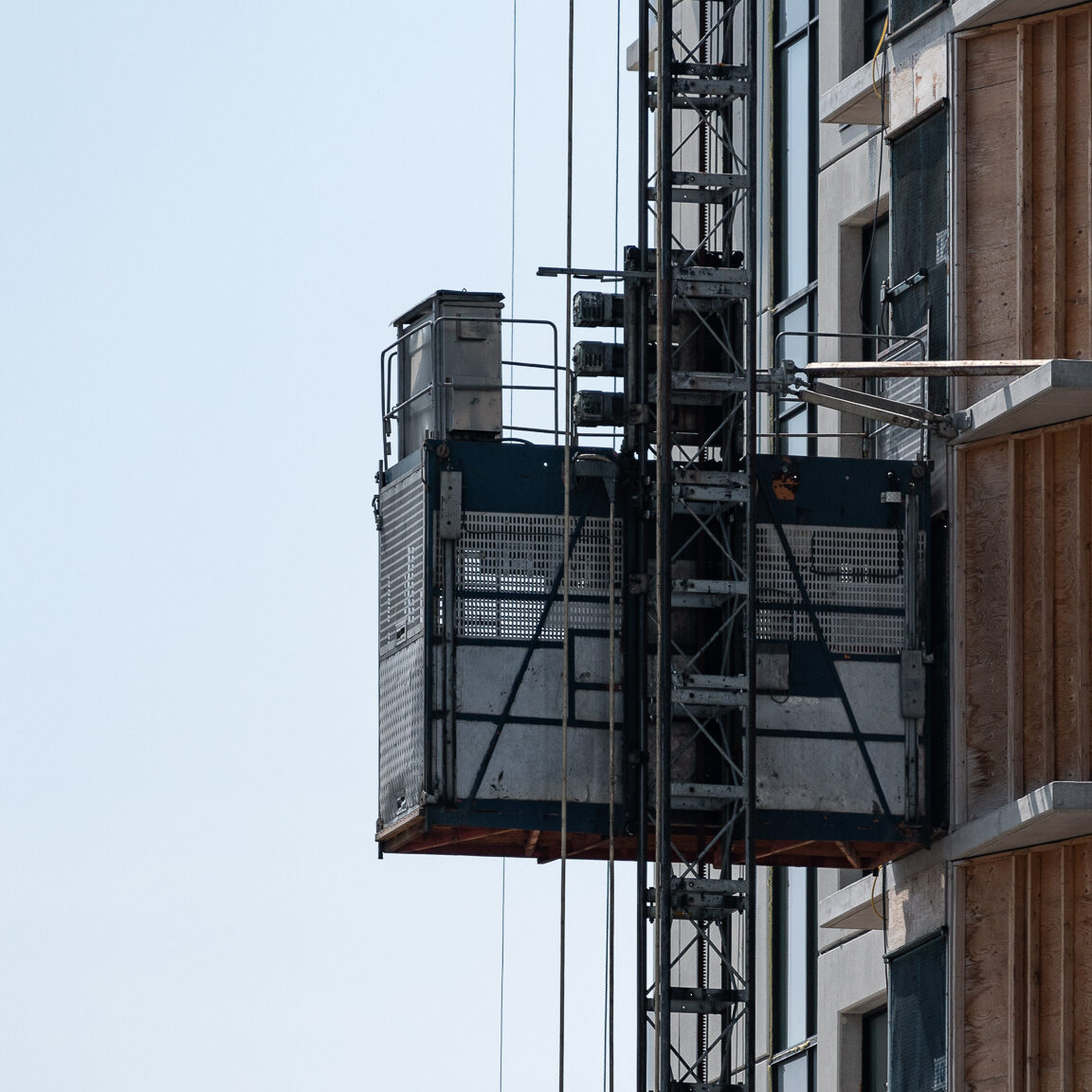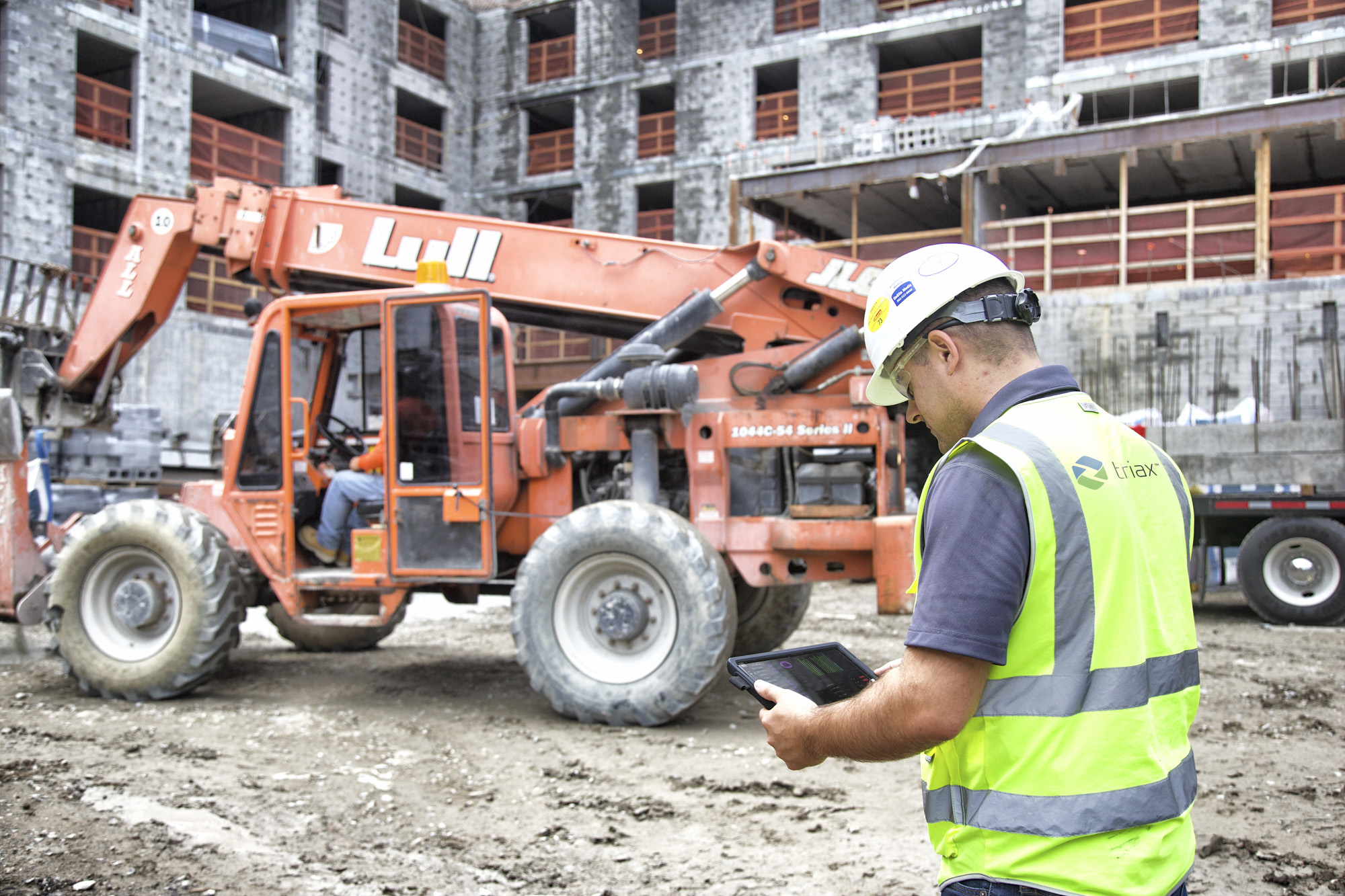
How Triax Technologies and McDonough Elevators are teaming up to use job site data to make job sites more efficient places.
Every job site is unique and comes with its own set of specifications, processes, and challenges. Yet, there is one thing that every job site strives for, and that is a higher level of efficiency. Builders are always searching for ways to improve workflows, cut waste, and streamline project delivery. Increasingly, the key to maximizing efficiency centers around data. With information on everything from the location of tools and workers to how often equipment is being used, project managers can use technology and data-driven insights to identify inefficiencies and simplify the construction process, thereby saving time, money, and even lives.
“People have made assumptions through the years with no data to back them up,” Joe Galatas, President of Houston-based McDonough Elevators, recently told BuiltWorlds. “What we are trying to do is utilize technology to build a data set that we can use to test the assumptions about elevator usage and what it means to a project.”
To achieve that goal, McDonough Elevators recently began using Triax Technologies’ Spot-r platform to measure the performance of its rental hoists. Galatas is hoping to take the data gathered by Spot-r and use it to make McDonough’s elevators more efficient.
“We are really trying to transform our business, which is why Triax is on the scene,” Galatas said.
We are really trying to transform our business, which is why Triax is on the scene.
Triax’s Vice President of Product, Ian Ouellette, described Spot-r as an “IoT platform backed by a robust network of sensors and devices, built for conditions where you traditionally cannot deploy networks.” McDonough Elevators has deployed the platform on a Houston jobsite, utilizing Spot-r EquipTags to collect data on how the elevators cars are used throughout the day. Ouellette said that this combination of data from workers and machines can provide new insights to make operations leaner and more efficient.
“This [McDonough’s] use case is a great example of overlaying Spot-r worker location data with machine utilization data to better align resources and optimize workflows,” Ouellette said. “To date, contractors have largely relied on assumption or physical observations into how they think workers and machines interact on site. Spot-r removes those assumptions and replaces it with objective data. It’s exciting to see an organization take such an innovation approach – and to know how they want to apply the new tech and data that is available in the industry.”
Not only can Spot-r help McDonough identify how workers move about on a jobsite, but it can also detect when the elevators are being used the most and therefore, where bottlenecks can occur.
“If the data from Spot-r shows a bottleneck at 6:30 every morning, and we see people waiting around for 20 minutes to get on an elevator to go to their work zone,” Galatas said, “we can begin to take simple steps like staggering the workforce or material deliveries and their arrival throughout the day to minimize downtime.”

Galatas believes that all construction companies should be looking at ways to embrace and apply innovative technology like Spot-r on their job sites. He wants data collection to be more “pervasive” in the industry, and for their part, McDonough plans to keep using Spot-r on projects beyond the current Houston site.
“This creates a definitive truth about a project that cannot be disputed,” he said.
This article was brought to you in partnership with Triax Technologies.

Discussion
Be the first to leave a comment.
You must be a member of the BuiltWorlds community to join the discussion.